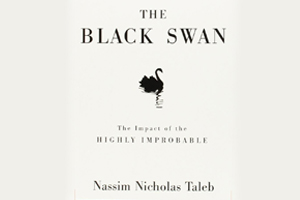Author: Jason Zweig
Jason Zweig’s Your Money and Your Brain offers a fascinating exploration into the ways our brains influence financial decisions, often leading us to behaviours that are contrary to our best interests. Zweig takes the reader on a journey into the realm of neuroeconomics— the science that blends neuroscience, psychology, and economics to explain how we make decisions, particularly with money. His book reveals how our emotions such as fear, greed, and euphoria can derail sound investment strategies, as well as the biological processes that drive these emotions.
Zweig is a highly respected financial journalist, author, and speaker, with decades of experience in simplifying the complexities of personal finance and investing. As a columnist for The Wall Street Journal, Zweig leverages his deep expertise gained from previous roles at Money magazine and as a senior writer at Forbes. He is well-known for his talent in breaking down intricate financial topics into understandable and engaging content. Beyond journalism, Zweig has made significant contributions by editing and annotating classic financial works, such as Benjamin Graham's The Intelligent Investor. Through books like Your Money and Your Brain, Zweig has become a key figure in educating the public on the psychological and behavioural factors that influence financial decision-making, helping individuals make smarter, more informed choices.
Zweig’s work, widely lauded for its accessibility and practical application, draws heavily from research by experts like Daniel Kahneman, a Nobel laureate in economic sciences. He meticulously connects the dots between cognitive biases, brain activity, and investment behaviour, offering insights that are both scientifically grounded and relatable. From examining how the brain responds to gains and losses to understanding why we often repeat mistakes despite knowing better, Zweig presents you with actionable advice on how to mitigate poor financial decisions.
A recurring theme in Your Money and Your Brain is the critical role of emotional control in successful investing. Zweig highlights how the brain processes financial risk as though it were a matter of life and death, explaining why losses tend to have a stronger emotional impact than gains. He delves into how investors can counter these natural tendencies by developing a better understanding of their psychological triggers and learning to manage them. In the end, Zweig’s message is clear - mastering your emotions is crucial to mastering your money. Through real-world examples, scientific studies, and practical tips, he provides you with a roadmap to navigate the complex interplay between brain and behaviour, ultimately encouraging smarter, more rational financial decisions.
Key takeaways
- The brain's reaction to financial gains mirrors its response to addictive drugs like cocaine, driving overconfidence and greed
- Routine financial rewards fail to excite the brain as much as unexpected gains, leading you to seek novelty
- Both financial gains and losses create intense physical and mental effects, with losses causing long-term stress
- Financial losses activate the brain's "fight or flight" response, making them feel like life-threatening events
- The potential for big gains clouds your judgment, causing you to overlook low odds and take unnecessary risks
- Anticipation of a reward triggers stronger brain responses than actually receiving the reward, fuelling speculative behaviour
- The brain instinctively looks for patterns in random events, leading you to attempt predicting market movements
- While financial stability is linked to happiness, beyond a certain point, more wealth does not increase overall life satisfaction
Zweig's Your Money and Your Brain offers an essential guide to understanding the psychological and biological factors that influence financial decision-making. By blending neuroscience with practical investment advice, Zweig helps you recognise the cognitive biases that can derail your financial plans. From the addictive nature of financial gains to the paralysing effects of loss aversion, the book provides a comprehensive look at how emotions shape your investing behaviour.
Understanding neuroeconomics
At the heart of Your Money and Your Brain is neuroeconomics, a field that examines how the brain makes financial decisions by blending neuroscience, psychology, and economics. Our brains, which evolved for survival, are not necessarily equipped to handle the complexities of modern financial markets. The brain processes financial gains and losses similarly to how it reacts to rewards and punishments in everyday life, making investing an emotionally charged activity. Neuroeconomics offers insights into why people struggle to control impulses, especially when faced with opportunities for quick gains or fears of devastating losses. Understanding these brain mechanisms can help you develop strategies to control your emotional responses, making you better equipped to handle market volatility. For example, realising that the brain's reaction to a potential loss is disproportionate can help you resist the urge to sell during a downturn, ultimately improving long-term financial outcomes.
The biology of greed and fear
We must delve deep into the biological drivers of two dominant emotions in investing - greed and fear. When you experience a financial gain, the brain releases dopamine, a chemical associated with pleasure and reward. This reaction can become addictive, pushing you to seek more gains, often leading to speculative behaviour. The euphoria from a winning investment is short-lived, causing many to chase ever-riskier ventures to replicate that high. On the flip side, financial losses activate the brain's fear response, triggering the amygdala, which handles your "fight or flight" reflexes. This primal response was once essential for survival but is detrimental in the context of investing. Fear leads to panic selling during market downturns, which can lock in losses and prevent you from reaping long-term rewards. By becoming aware of these biological reactions, you can take steps to moderate their behaviour. Techniques like diversification, sticking to a long-term investment plan, and practicing mindfulness can help you manage emotional responses, preventing rash decisions based on short-term market fluctuations.
Loss aversion and its consequences
Loss aversion is a key concept in behavioural finance that highlights the tendency of individuals to prioritise avoiding losses over the prospect of gaining equivalent rewards. This psychological bias is fundamental to understanding investment behaviours, as the discomfort associated with losing money is often more intense than the pleasure derived from making money. Pioneered by psychologists Daniel Kahneman and Amos Tversky through their prospect theories, loss aversion posits that losses are perceived as roughly twice as impactful as gains. For example, the pain of losing USD 100 is typically felt more acutely than the satisfaction of gaining USD 200. This aversion leads you to engage in seemingly irrational behaviours, such as holding onto losing investments in hopes of recovery, rather than accepting losses and reallocating resources to more promising opportunities. Similarly, the desire to lock in gains can prompt you to sell winning stocks prematurely, missing out on greater future profits. Furthermore, loss aversion can result in overly conservative strategies, with risk-averse investors favouring safer assets like bonds over stocks, which can hinder overall portfolio growth. To combat the detrimental effects of loss aversion, investors can reframe their understanding of losses, viewing them as temporary market fluctuations rather than irreversible setbacks. Establishing predefined investment rules and diversifying across various asset classes can also mitigate emotional decision-making, promoting a more balanced approach to achieving long-term financial objectives.
The danger of overconfidence
Overconfidence is another common pitfall addressed in Your Money and Your Brain. Many investors believe they can predict market movements or identify the next big stock, but studies show that even professional investors are often wrong. Overconfidence stems from the brain’s tendency to overestimate its own abilities, particularly in fields like investing, where randomness and uncertainty play significant roles. This overconfidence can lead to excessive trading, which not only increases transaction costs but also reduces overall returns. You can combat overconfidence by relying on passive investment strategies, such as index funds, which have been shown to outperform most actively managed funds over time. Recognising the limits of your knowledge and expertise is key to avoiding costly mistakes driven by overconfidence.
Living a longer life
Happiness is closely linked to longevity and overall health, as well as financial well-being. Insights into this connection reveal that a positive outlook on life can enhance both physical and financial prosperity. For instance, back in 1957, the average American's income, when adjusted for inflation, was around USD 10,000, and many lived without modern conveniences like dishwashers or air conditioning – despite this, 35% of respondents reported being "very happy." Fast forward to 2004, and although average personal income had nearly tripled, the percentage of those declaring themselves "very happy" remained relatively unchanged at 34%. This indicates that true contentment often stems from one’s perspective rather than material wealth. Many individuals mistakenly believe that accumulating more money or possessions is essential for happiness. However, surveys consistently show that time spent with loved ones and meaningful social connections are far more significant contributors to happiness. This highlights the importance of valuing relationships over material accumulation, suggesting that fostering strong personal connections may lead to a more fulfilling and financially secure life. Ultimately, the key to happiness lies not in the pursuit of wealth, but in appreciating the simple joys and relationships that enrich our lives.
Zweig’s practical advice— such as maintaining a diversified portfolio, sticking to a long-term plan, and managing emotional responses— can help you navigate the volatile world of finance with more confidence and clarity. This is where mutual funds can play a critical role in your journey. As investment vehicles, mutual funds enable you to invest in diversified investments spread across multiple asset classes, strategies, and styles. For example, to diversify your portfolio, you can choose to invest from a range of equity, debt or hybrid funds. Further, in order to overcome certain biases, you also have an option to invest in the passive style of investing by investing in index funds or Exchange Traded Funds (ETFs).
Ultimately, Your Money and Your Brain serves as a powerful reminder that the biggest obstacle to financial success is often the one inside our heads. By mastering your emotions and understanding the underlying mechanisms of our decision-making processes, you can make smarter, more informed investment choices.
An investor education initiative by Edelweiss Mutual Fund.
All Mutual Fund Investors have to go through a onetime KYC process. Investor should deal only with Registered Mutual Fund (RMF). For more info on KYC, RMF and procedure to lodge/redress any complaints – please visit on https://www.edelweissmf.com/kyc-norms
MUTUAL FUND INVESTMENTS ARE SUBJECT TO MARKET RISKS, READ ALL SCHEME RELATED DOCUMENTS CAREFULLY.
Trending Books
MUTUAL FUND INVESTMENTS ARE SUBJECT TO MARKET RISKS, READ ALL SCHEME RELATED DOCUMENTS CAREFULLY.

















